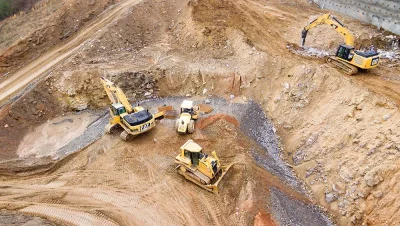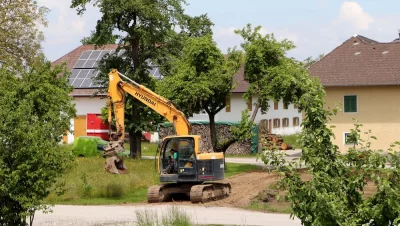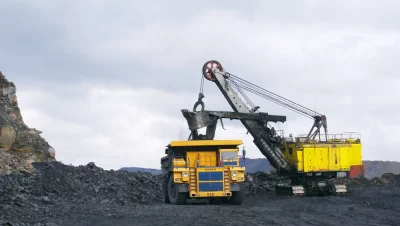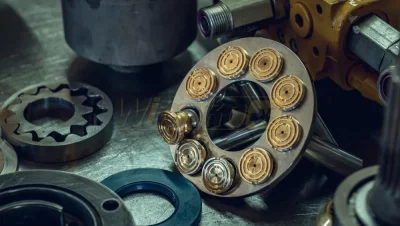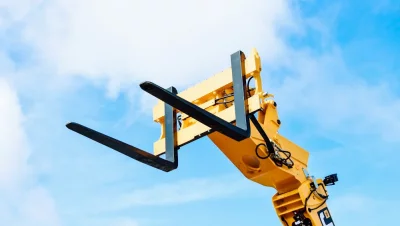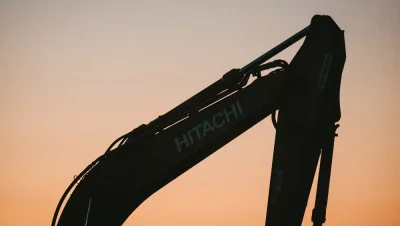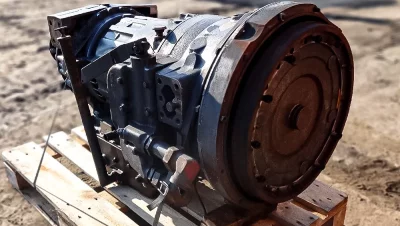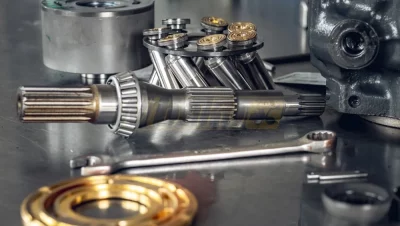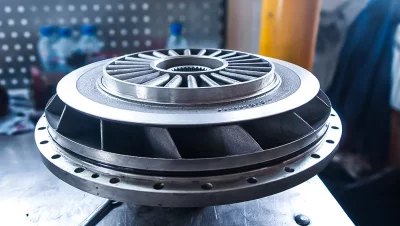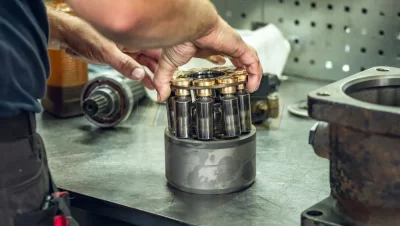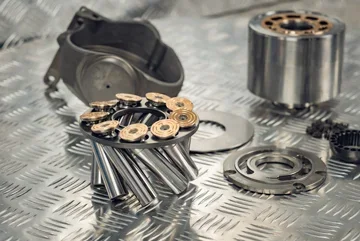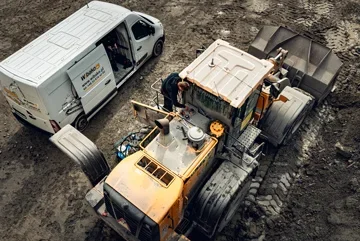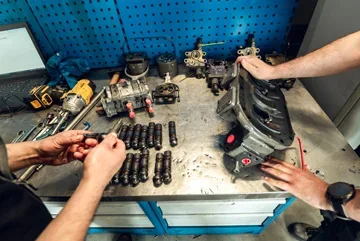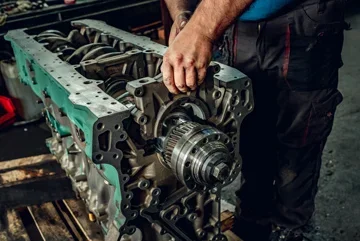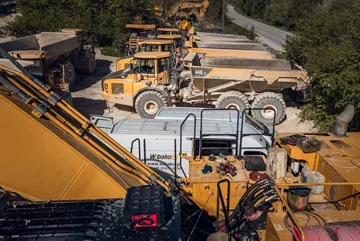Symptoms that do not bode well
The report was clear: the machine is weak, movements are sluggish. Our service team needed no further encouragement – such symptoms often precede more serious problems with the hydraulic system. Upon arrival and initial verification, the suspicions were confirmed: hydraulic pump regeneration was necessary.
Time to act – disassembly and diagnosis
The first step was to unscrew the mounting elements of the coupling flange attaching the pump to the combustion engine. Marcin, our hydraulics specialist, immediately got to work. He disassembles the regulator, unscrews the screws of the closing plate, and removes it. Already at this stage, it is evident that the pump had been previously repaired – the lubrication socket of the bearings showed signs of earlier regeneration.
What went wrong?
This is a fairly common case – the lubrication socket is the Achilles' heel of this series of pumps. Its damage results in the wrong direction of oil flow: instead of going to lubricate the tilting plate and bearings, the oil enters the interior of the pump, causing leaks and preventing the achievement of maximum pressure. Diagnosis confirmed – the culprit identified.
Disassembly into components
From the housing, we extract the entire rotating group – shaft, cylinder, tilting plate. We proceed to disassemble the separator brackets. The screws were screwed in with glue, so we heat the tilting plate at the mounting point – this allows the screws to come out without any problems.
Inspection and analysis of technical condition
Next, everything goes for washing and thorough inspection. On the press, we disassemble the cylinder spring and check the condition of the rings. Unfortunately – they qualify for replacement, as does the outer sleeve of the cylinder. The main lubrication socket also does not hold dimensions – it is responsible for delivering oil to the tilting plate. If it is damaged, the entire system loses tightness and the pump cannot operate correctly.
Regeneration – surgical precision
We also disassembled the regulator and checked the coil. All verification results were recorded in the system. After preparing the parts, we proceeded to assembly. The cooperating parts were polished, the housings and closing plate – cleaned. We replaced the outer sleeve of the cylinder and the rings.
The biggest challenge – regeneration of the lubrication socket
We devoted the most attention to the problematic lubrication socket. We decided on regeneration, as the cost of a new one is very high – we pressed in a sleeve with original dimensions and appropriate hardness. We also checked the clearances on the shaft, pistons, and separator brackets. Finally – the closing plate, which needed to be precisely adjusted. Too small a clearance would risk quick wear and failure, too large – a lack of effective operation.
Tests and results – the final stretch
After assembling everything, it was time for tests. We connected four hoses – power, main pressure, leaks, and control. Remember – before starting the pump, it must always be bled. Start-up at 1000 revolutions and full control of parameters. All values are within normal limits, the pump works perfectly! The last stage is painting and shipping to the client.
The entire video can be seen here.



